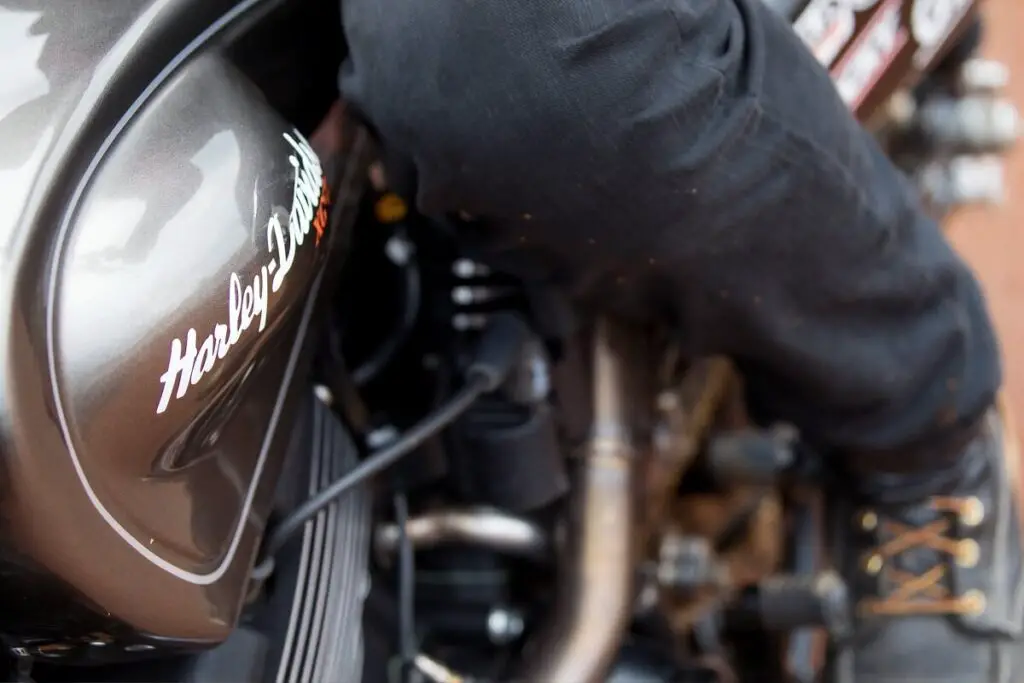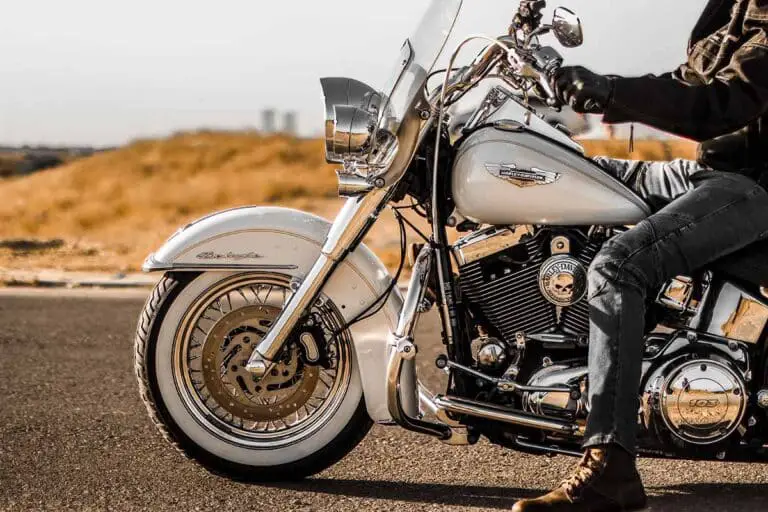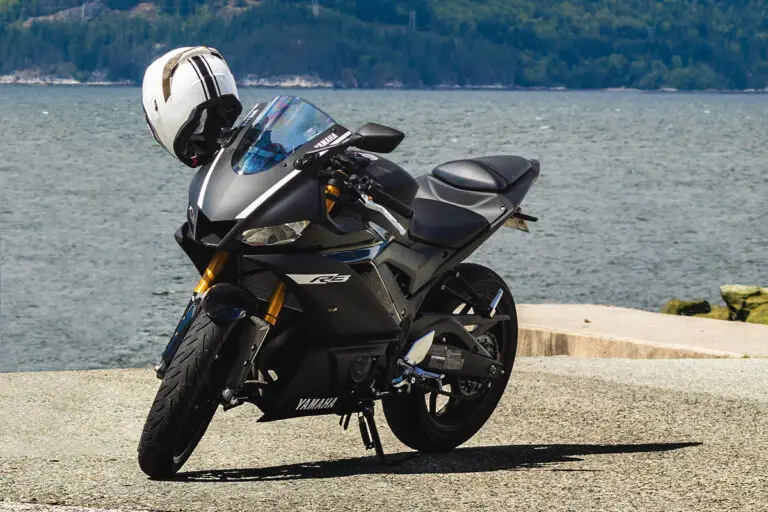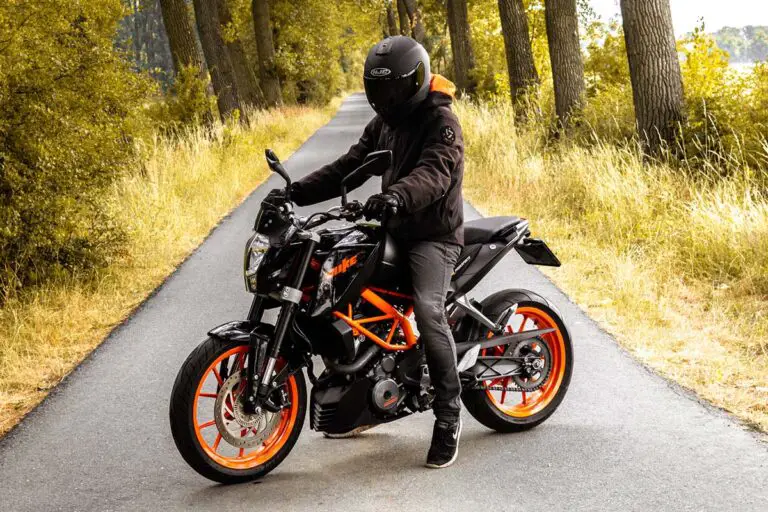Harley Ironhead vs. Shovelhead: Differences
Disclosure: We may get commissions for purchases made through links in this post.
Ironhead and Shovelhead engines are two of the most significant power mills ever produced by American powerhouse Harley-Davidson. Both have prominent monikers, a cult-like following, and decades-long production runs. They also have overlapping stints in the market, understandably confusing even the most avid HD enthusiasts.
So how do we define the Ironhead and Shovelhead engines? Do they have the same lineage? What about displacements? And how exactly do you tell these layouts apart?
Those unfamiliar with Harley-Davidson’s history may find it tricky to spot disparities between the Ironhead and Shovelhead engines, except for their retronym. However, several factors set these configurations apart, including price point, safety, rider comfort, reliability, and overall performance included.
Being part of the earliest brainchild of Harley-Davidson make learning about these pioneer engine layouts more interesting. And if you feel the same excitement and anticipation as I do, stick around and immerse yourself in the origins, unique characteristics, and competencies of these two iconic power mills.

Ironhead vs. Shovelhead Variables
The Ironhead and Shovelhead power mills have an undeniable historical significance and are considered milestone blueprints by Milwaukee giant Harley-Davidson. However, they are two very different engines. And in the succeeding sections, you’ll discover exactly how.
Segment
The Harley-Davidson Ironhead engine is officially known as the Sportster Ironhead as it was predominantly used in the said motorcycle label. While it underwent several improvements during its lifespan (from 1957—1985), it was fitted solely into Sportster models and some XR-series iterations — all of which belong to the firm’s cruiser segment.
On the other hand, the Harley-Davidson Shovelhead engine has been used in HD two-wheelers falling under the touring segment. But unlike the Ironhead, it was not exclusive to a specific motorcycle line.
Among the subsegments that featured the Shovelhead power mill are the Electra Glide, Super Glide, and Low Rider series. For those interested, the complete list of Shovelhead variations can be found in this article.
Nomenclature
Although most pre-1990 engine retronyms were based on appearance, this rule did not always apply to all Harley-Davidson power mills. Such was the case for the Ironhead and Shovelhead engines.
The name “Ironhead” for the 1957—1985 layout was derived from the construction of the engine’s cylinder heads. The Ironhead engine featured cast iron cylinder heads, distinguishing it from the preceding Harley-Davidson K-series engine that sported aluminum heads. Hence, it only made sense for the engine to earn such a moniker since its design highlighted cast-iron cylinder heads.
As for the “Shovelhead,” its name was based on the shape of its rocker boxes (which appeared to resemble an upended shovel). It didn’t matter that the engine’s cylinder heads were constructed from aluminum and had larger valves and enhanced cooling.
Dimensions
In terms of length, width, and height between the Ironhead and Shovelhead engines, the latter is relatively larger than the former (the same can be said for piston displacement). Depending on the year, specific configurations, and mods, the Shovelhead engine had bore-stroke ratios, and size ranges as follows:
| Parameter | Dimensions |
|---|---|
| Length | 19—25 inches (483—635 mm) |
| Width | 16—18 inches (406—457 mm) |
| Height | 18—22 inches (457—559 mm) |
| Displacement | Bore-Stroke Ratio |
|---|---|
| 61ci | 88.9—96.8 mm (3.498—3.811 inches) |
| 74ci | 88.9—107.9 mm (3.498—4.250 inches) |
| 80ci | 88.9—122.2 mm (3.498—4.812 inches) |
The Harley Ironhead is not too far behind, having engine displacements of 54ci and 61ci. Engine dimensions begin at 22 x 16 x 18 inches (559 x 406 x 457 mm, L x W x H), while bore-stroke ratios can be seen in the table below (stroke length is unchanged between displacements, although the 61ci mill is slightly overbored):
| Displacement | Bore-Stroke Ratio |
|---|---|
| 54ci | 76.2—96.8 mm (3.000—3.811 inches) |
| 61ci | 81—96.8 mm (3.189—3.811 inches) |
Off-Road Capability
Ironhead and Shovelhead power mills are on an even playing field in this area, as these blueprints were primarily designed for street use. By themselves, these engines are not categorically off-road competent. But with a few critical mods and adaptations, their performance can be enhanced to suit off-pavement conditions.
That said, riders would have to consider (if not tinker with) other aspects of the bike, such as its suspension geometry, ground clearance, frame chassis, weight distribution, tire-and-wheel assembly, and torque and power outputs if they were to even quantify the off-roading competencies of these engines.
Safety
Regarding safety, it’s important to note that Ironhead and Shovelhead engines are mechanical components of Harley-Davidson motorcycles and do not inherently dictate the overall safety of these bikes. Safety, per se, is influenced by rider skill, upkeep, riding conditions, and the overall design of an HD motorcycle (or any given two-wheeler, for that matter).
However, a few aspects are worth considering when comparing these engine layouts.
In its early years of production, the Harley Ironhead had a reputation for running hot and being prone to overheating. This was primarily due to its air-cooled design, limited cooling fins, and location within the frame, impeding airflow. These facets are not necessarily trouble by themselves. However, the mill’s propensity to overheat could be exacerbated in stop-and-go traffic or during extended periods of idling.
The Harley Shovelhead addressed some of these overheating issues by incorporating larger cooling fins, improved oil circulation, and a more efficient cooling system. However, these improvements do not make the engine impervious to faults since overheating can still occur under extreme conditions or if the cooling system is ill-maintained. Nonetheless, HD’s efforts on the Shovelhead weren’t entirely futile, as these enhancements considerably reduced radiant heat and the engine’s proclivity for thermal overload.
It is important to note that these engines’ potential safety risks go beyond overheating tendencies. Given the age of their technology, over 60 and 70 years, respectively, it would be unsurprising if both are more susceptible to mechanical issues and breakdowns than more modern engines. These issues may include worn components, oil leaks, electrical problems, and general wear and tear and do not exempt even well-maintained Ironhead and Shovelhead engines.
Rider Comfort
While both these iconic power mills are known for their distinctive engine vibrations, the Ironhead engine is generally considered to have more pronounced shuddering than the Harley-Davidson Shovelhead. It turns out that the Ironhead’s rigid-mount design provides little to no help regarding vibrations. Not all HD owners share the same sentiment, though, as evidenced in feedback shared by these folks in HD-dedicated forums.
The engine vibrations become more noticeable with the Ironhead, specifically when idling or at lower RPMs. Personally, this flaw adds to the motorcycle’s rugged appeal. However, the shaking sensation can feel tiring during all-day rides or at higher speeds, even for hardcore HD fanatics.
Thanks to its rubber-mounted design, the Shovelhead does slightly better than its predecessor in this area. As earlier hinted, there are opposing views about the effect of this upgrade on riding comfort. Some say it effectively mitigates the severity of engine vibrations. Meanwhile, others claim it does the opposite and that the Ironhead’s rigid-mount design works better at dampening the engine’s shuddering.
Perhaps, a fitting tie-breaker between the two is an accompanying problem. And in the case of the Ironhead, this is the issue. Engine vibrations from a Shovelhead mill tend to be more negligible since riders only have to deal with one dilemma. In comparison, the Ironhead has both engine vibration and overheating proclivities.
Overall Performance
Like enthusiasts of other types of motorized vehicles, performance figures matter to motorheads. The slightest difference in top speed, torque output, and ponies could dissuade a prospective buyer from opting for a specific Harley-Davidson power mill. In these aspects, the Shovelhead engine has the upper hand — except in fuel mileage (For purposes of comparison, I’ve put same-displacement engines against each other):
| Parameter | Ironhead 61ci | Shovelhead 61ci |
|---|---|---|
| Horsepower | 40—50 hp @ 4,500—5,500 RPM | 50—60 hp @ 4,500—5,500 RPM |
| Torque | 45—50 lb-ft @ 3,500—4,500 RPM | 55—60 lb-ft @ 3,500—4,500 RPM |
| Top Speed | 90—100 mph (145—160 km/h) | 95—105 mph (153—169 km/h) |
| Quarter-Mile Record | 14—16 secs @ top speed | 13—15 secs @ top speed |
| Fuel Mileage (CTY/HWY) | 35—45 MPG; 15—19 kmpl (estimate) | 30—40 MPG; 13—17 kmpl (estimate) |
(The veracity of the information above is to the best of my knowledge at the time of this writing. However, I strongly recommend conducting your own fact-check/research on the engines’ performance figures.)
The Shovelhead engine’s better leverage in speed, torque, and horsepower is largely ascribed to its aluminum cylinder heads, larger valves and cooling fins, improved porting, and increased displacements. These upgrades mitigated overheating tendencies and augmented heat dissipation, enhancing airflow and translating to an increase in power output.
Ironhead engines are not that far behind in top speed. However, the number gap becomes more apparent in horsepower and torque, mainly because the Ironhead has a bigger tendency to overheat and more restricted airflow than its successor.
Price Point
A rough estimate for a used Ironhead power mill could fall between $1,000 and $4,000, contingent on engine condition, the requirement for additional components, and displacement. Conversely, a used Shovelhead engine could range from $2,000 to $8,000 (or higher), dependent on the same factors.
Note that these estimates are for used engines, meaning that rebuilt power mills are even more expensive. The heftier price tag is due to using OEM or aftermarket parts to replicate the original design and specs of the given engine. Some engine builders even add modern upgrades and enhancements to either blueprint to enhance its performance and reliability!
Conclusion — Differences Between Harley Ironhead and Shovelhead Engines
Overall, the Ironhead and Shovelhead engines are amazing blueprints boasting a rich history and are symbolic of Harley-Davidson’s journey as a manufacturer. They may not be as high-tech as modern powerplants found in liter-class behemoths. But without these two, the hearts of those jaw-dropping two-wheelers would not have reached the efficiency that they have today.
That said, either engine is a great choice for a Harley-Davidson motorcycle. Ultimately, deciding to go for one over the other will boil down to your personal preferences, mechanical savvy, and passion for maintaining such a heritage-rich power source.






